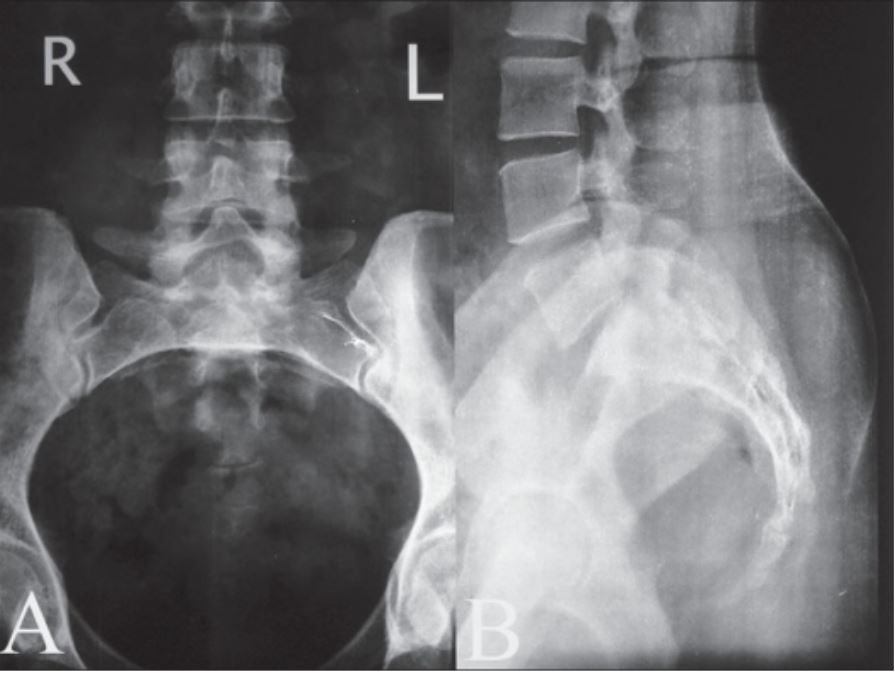Playlist
Show Playlist
Hide Playlist
Intradural Extramedullary Myelopathy
-
Slides Diseases of the Spinal Cord.pdf
-
Download Lecture Overview
00:00 So let's talk more about the typical presentation and management strategy for intradural extramedullary myelopathy. In terms of the patient presentation, we see signs and symptoms of spinal cord as well as nerve root compression. Often, this pathology is developing within the nerve root and compressing or resulting in compression of the spinal cord, and so we can see the combination of those signs and symptoms. Common presentations include weakness, localized back pain is a result of local compression of the meninges, radicular pain is common owing to the nerve root localization of many of these disorders, sensory deficits can be seen, and gait ataxia is not uncommon. 00:46 When we think about etiologies, primary intradural extramedullary neoplasms are a common cause so we want to think about these tumors, many of which are benign as well as intradural herniation of an intervertebral disc. And those would be the 2 most common causes of an intradural extramedullary lesion. Some of the common neoplasms that we think about are meningiomas arising from the meninges accounting for somewhere between 20% and 30% of these lesions, schwannomas arising from the peripheral nerve root as well as neurofibromas. Both of those being peripheral nerve sheath tumors. Less common causes include the solitary fibers tumor or what was called hemangiopericytoma arising from the pericytes around meningeal veins and malignant peripheral nerve sheath tumors which result from malignant degeneration of a benign peripheral nerve sheath tumor. When we think about diagnosis, imaging is critical for diagnosing these patients. Again, they often present with asymmetric weakness, sensory deficits, sometimes radicular pain and upper motor neuron signs. In those patients, we want to seek diagnostic imaging and MRI is the modality of choice as was performed in our patient. The appearance will vary depending on the tumor and the cause whether this is a herniated disc, a tumor, or some other etiology and distinguishing features include some of the following that you see here. 02:17 For meningioma, we can see a dural tail or dural involvement and that dural tail sign, while not specific for meningioma, is very commonly seen in that condition. 02:27 We can see homogenous contrast enhancement as well. For nerve sheath tumors, we often see nerve root involvement. These tumors arise from the nerve root and we see nerve root involvement on imaging. We can see extradural neuroforaminal extension, so extension of the tumor outside the neuroforamen and to the extradural space. For schwannomas, the typical MRI appearance is marked T2 hyperintensity. 02:54 This can be heterogenous with some cystic components particularly when larger and they can displace the surrounding nerve roots. Schwannomas arise from a single nerve and nerve fascicle and so we see that the other surrounding nerves are displaced. In contrast, neurofibromas often appear as marked T2 hyperintense lesions, but here we see encasement of other nerve roots, they can be fusiform or flexiform involving multiple nerve roots and this will be the typical appearance of a neurofibroma. When we think about the dumbbell lesion, here you can see a good example as was present in our case. We see 2 large areas of tumor, one inside the dura inside the spinal axis, the other with extradural extension and that small area of the dumbbell that you would grab is the tumor coursing along the neuroforamen giving this dumbbell appearance. So, when we think about intradural extramedullary lesions, these are tumors or lesions outside of the spinal cord but within the dura. 04:01 MRI is the modality of choice for evaluating these and we think about things like meningiomas, schwannomas, neurofibromas, and intradural herniated discs.
About the Lecture
The lecture Intradural Extramedullary Myelopathy by Roy Strowd, MD is from the course Diseases of the Spinal Cord.
Included Quiz Questions
Which of the following causes of intradural extramedullary myelopathy encases the nerve root and appears fusiform on MRI?
- Neurofibroma
- Meningioma
- Schwannoma
- Nerve sheath tumor
Customer reviews
5,0 of 5 stars
| 5 Stars |
|
5 |
| 4 Stars |
|
0 |
| 3 Stars |
|
0 |
| 2 Stars |
|
0 |
| 1 Star |
|
0 |




